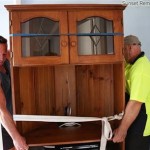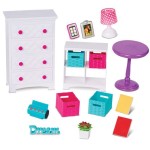Clean Mold From Wood Furniture
Mold growth on wood furniture is a common problem, especially in humid environments. Mold can be unsightly and potentially harmful to health, making it essential to remove it promptly and effectively. This article will outline a comprehensive guide on how to clean mold from wood furniture, covering the essential safety precautions, appropriate cleaning methods, and preventive measures.
Safety Precautions
Before attempting to clean mold from wood furniture, prioritize safety. Mold spores can trigger allergies and respiratory problems. Always wear protective gear, including a respirator mask, gloves, and long sleeves, to minimize exposure. Ensure adequate ventilation by opening windows and doors to allow fresh air circulation. Protect your eyes with safety goggles. It is crucial to avoid disturbing the mold during the cleaning process as this can release spores into the air.
Cleaning Methods
Several methods can be employed to eliminate mold from wood furniture, depending on the severity of the infestation.
Mild Mold Growth
For minor mold growth, a simple solution of water and mild dish soap can be effective. Mix equal parts water and dish soap in a spray bottle. Apply the solution to the affected area, gently scrubbing with a soft-bristled brush. Wipe the surface clean with a damp cloth and allow it to air dry completely.
Moderate to Severe Mold Growth
For more extensive mold growth, a stronger cleaning solution is required. Combine a cup of white vinegar with two cups of water in a spray bottle. Apply the solution to the affected area and allow it to sit for 10-15 minutes. Gently scrub the surface with a stiff-bristled brush. Rinse thoroughly with clean water and dry completely.
Severe Mold Growth
In cases of severe mold growth, professional cleaning may be necessary. A professional mold remediation specialist can assess the extent of the damage and use specialized techniques to remove the mold safely and effectively.
Preventive Measures
Once the mold has been removed, it is essential to take preventive measures to discourage its return. This involves addressing the underlying causes of moisture and humidity.
Reduce Humidity
Mold thrives in damp environments. Reducing humidity levels in the home is crucial. Use a dehumidifier, especially in areas prone to moisture buildup, such as bathrooms and kitchens. Ensure proper ventilation by opening windows and doors whenever possible.
Repair Water Leaks
Promptly repair any leaky pipes, faucets, or water damage to prevent moisture accumulation. This will help stop the growth of mold and mildew.
Regular Cleaning
Regularly clean wood furniture with a damp cloth to remove dust and debris. This will help prevent mold growth by eliminating food sources.
Cleaning mold from wood furniture requires a combination of safety precautions, appropriate cleaning methods, and preventive measures. By following these guidelines, you can effectively eliminate mold and protect your furniture and health. If the mold growth is extensive or you are unsure about the cleaning process, it is best to consult a professional mold remediation specialist.

Remove Mold Mildew From Furniture Diy Stop The Stink Musty Moth Balls Youtube

Tips For Cleaning Mold From Your Wood Furniture

How To Remove Mold From Wood Furniture Rescue One Restoration

How To Remove Mold From Wood Furniture For Your Home Q

How To Remove Toxic Black Mold From Wood Youtube

How To Remove Mold From Wood Furniture 10 Steps With S

Is Mold On Wood Furniture Dangerous

How To Remove Mold From Wood Furniture In 30 Minutes Angi

How To Remove Mold From Wood 2025 Today S Homeowner

What Is The Best Way To Kill Black Mold On Wood








